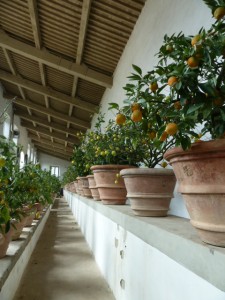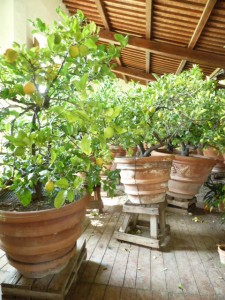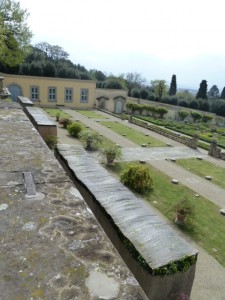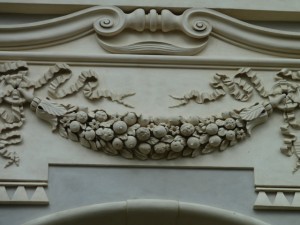 The very first glasshouses were not entirely made of glass. That is, their construction did not entail four walls that consisted primarily of glass. But they were surprisingly large, and designed for a specific purpose—the storage of container-grown citrus trees in winter. In Italy these “limonaia” (related to the “orangerie” later developed in France) had three solid walls; glass was limited to the south-facing wall, and consisted of groups of relatively small windows. Limonaia were often situated against sloping topography, with one wall built against or into the slope.
The very first glasshouses were not entirely made of glass. That is, their construction did not entail four walls that consisted primarily of glass. But they were surprisingly large, and designed for a specific purpose—the storage of container-grown citrus trees in winter. In Italy these “limonaia” (related to the “orangerie” later developed in France) had three solid walls; glass was limited to the south-facing wall, and consisted of groups of relatively small windows. Limonaia were often situated against sloping topography, with one wall built against or into the slope.

The story of early glasshouses is thus closely tied to that of the cultivation of citrus fruit in Italy, and that history is a long one. Originating in China and India, citrus fruits– including sour oranges, lemons and limes– were grown there as well as in Persia, Palestine and Egypt for many centuries before arriving in Europe. Roman mosaics from Pompeii (destroyed in 70 AD) as well as from Carthage, dating to the second century A.D. depict branches of fruit-bearing lemon and orange trees. Wealthy estates were destroyed in the subsequent Lombard invasion of 568 A.D. but citrus may have been re-introduced by the crusaders sometime before the thirteenth century.

Although citrus thrived out in the open in southern Italy–primarily in Sicily and Naples– gardeners in Northern Italy developed systems for winter protection. Later historians have suggested that even during the third century it was not uncommon for wealthy Romans with country houses in the colder districts to cultivate citrus with winter protection. In time, the limonaia–a stone and stucco structure—became customary for housing large potted specimens during the coldest months. It was equipped with supplemental heat, and limited southern glass. But, as the plants inside them were not actively growing in those relatively cool temperatures, conditions were sufficient to keep them alive.
By the time the Giardino Boboli Limonaia in Florence was designed in 1777-1778, these buildings had become a standard feature of the Italian villa garden. Today, the Boboli Limonaia houses a collection said to include lemons and oranges originally collected by the Medici, who chose them for therapeutic and medicinal reasons, as well as for their attractive forms. It is a considerable collection, featuring many unusual, even eccentric types of fruit.

Significant advances in the manufacture of glass and the technology of heating would have to occur before the glasshouse– as we know it today—could become a possibility.
Article copyright by Alice McGowan written for www.hartley-botanic.com.


